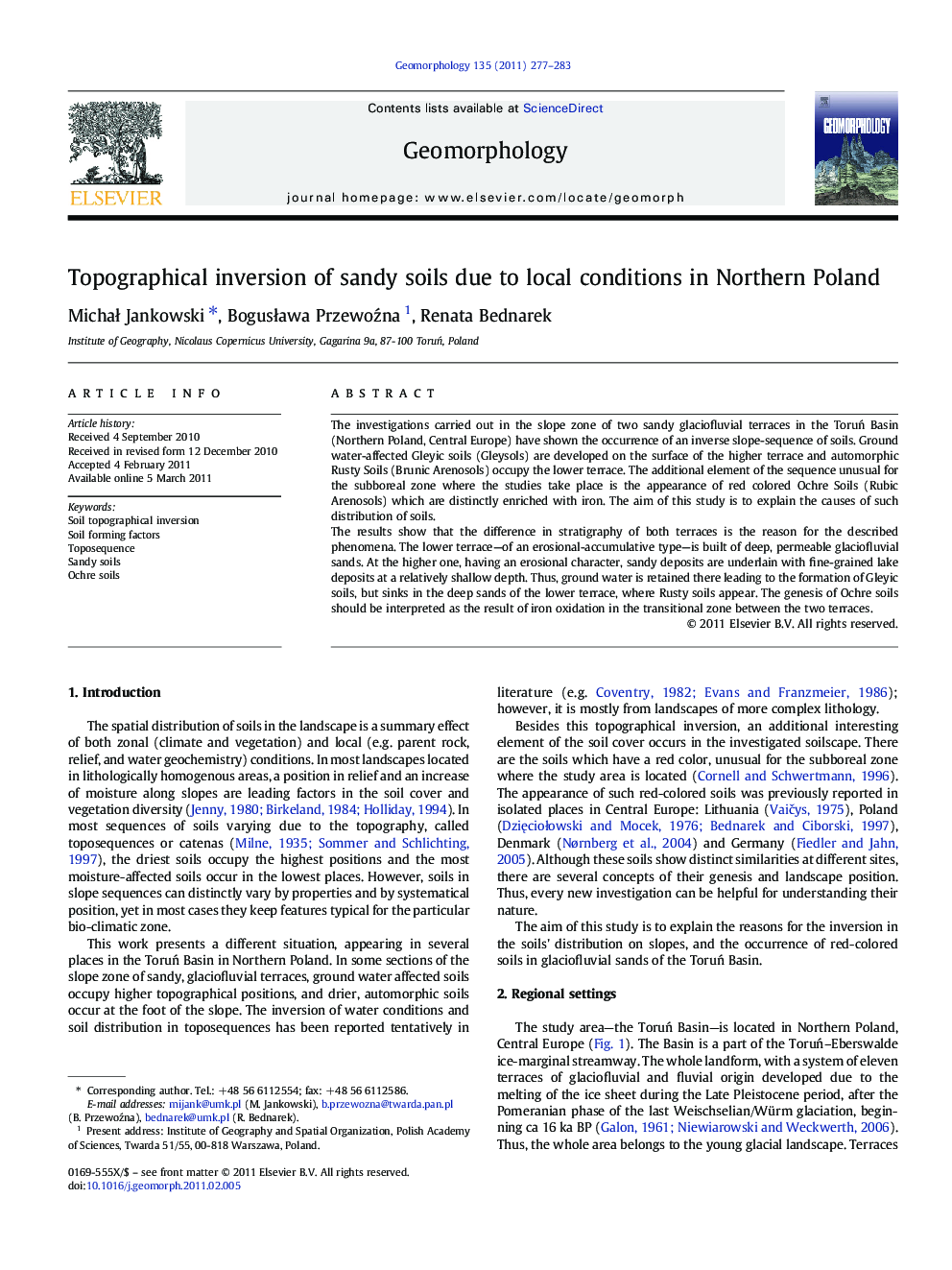| Article ID | Journal | Published Year | Pages | File Type |
|---|---|---|---|---|
| 4685416 | Geomorphology | 2011 | 7 Pages |
The investigations carried out in the slope zone of two sandy glaciofluvial terraces in the Toruń Basin (Northern Poland, Central Europe) have shown the occurrence of an inverse slope-sequence of soils. Ground water-affected Gleyic soils (Gleysols) are developed on the surface of the higher terrace and automorphic Rusty Soils (Brunic Arenosols) occupy the lower terrace. The additional element of the sequence unusual for the subboreal zone where the studies take place is the appearance of red colored Ochre Soils (Rubic Arenosols) which are distinctly enriched with iron. The aim of this study is to explain the causes of such distribution of soils.The results show that the difference in stratigraphy of both terraces is the reason for the described phenomena. The lower terrace—of an erosional-accumulative type—is built of deep, permeable glaciofluvial sands. At the higher one, having an erosional character, sandy deposits are underlain with fine-grained lake deposits at a relatively shallow depth. Thus, ground water is retained there leading to the formation of Gleyic soils, but sinks in the deep sands of the lower terrace, where Rusty soils appear. The genesis of Ochre soils should be interpreted as the result of iron oxidation in the transitional zone between the two terraces.
